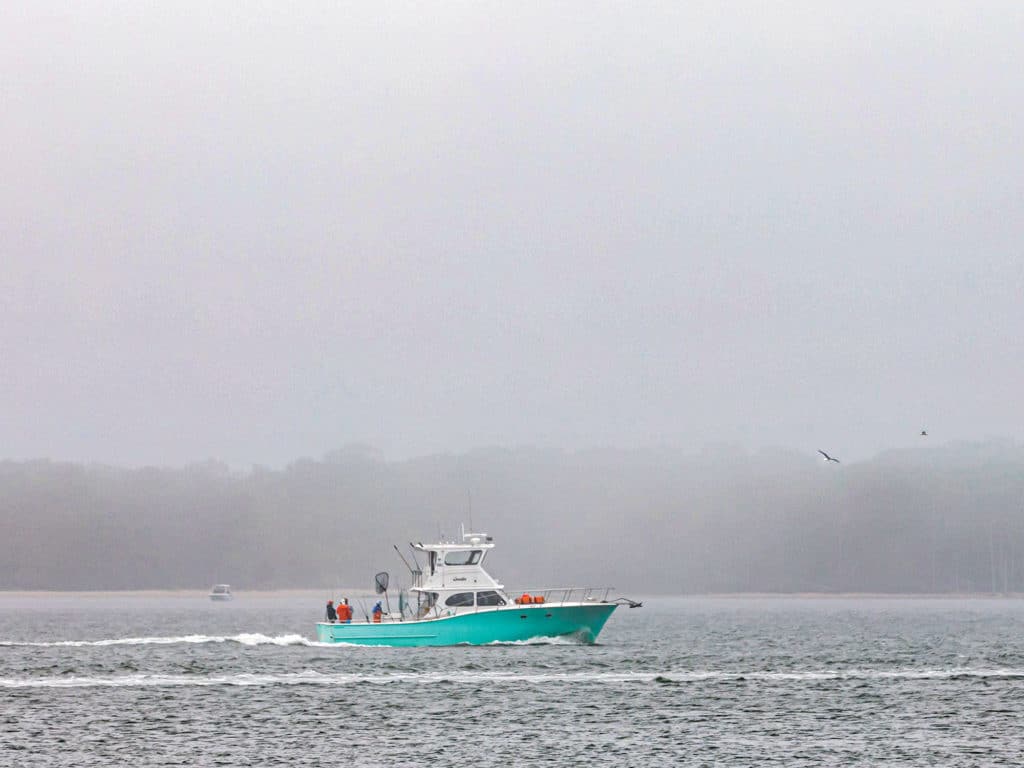
It’s hard to imagine running to and from the fishing grounds at night or in a fog without radar, especially as waterways become increasingly crowded with boats and ships, as well as obstacles such as offshore wind farms, aquaculture operations and more.
Radar is so important nowadays that I wouldn’t go fishing without it, no matter what the visibility. And the latest crop of solid-state marine radars reinforces that conviction.
Not only do the newest systems offer higher definition and more information when it comes to target returns, they are easier to use and interpret. On top of that, radar scanners are more compact and streamlined, making them suitable for boats as small as 20 feet. Let’s look at some of the cool features you’ll find on the latest marine radars, including both dome and open-array systems.
Compact Style
For decades, the appearance of open-array marine radar scanners barely changed. But now, at least one company has introduced a more compact, stylish and aerodynamic design. The open arrays of Raymarine’s new Cyclone solid-state radar series reflect fresh—some might say radical—aesthetics. Reminiscent of an aircraft wing, the relatively thin scanner is more aerodynamic, allowing it to start and run at boat and wind speeds up to 100 knots.
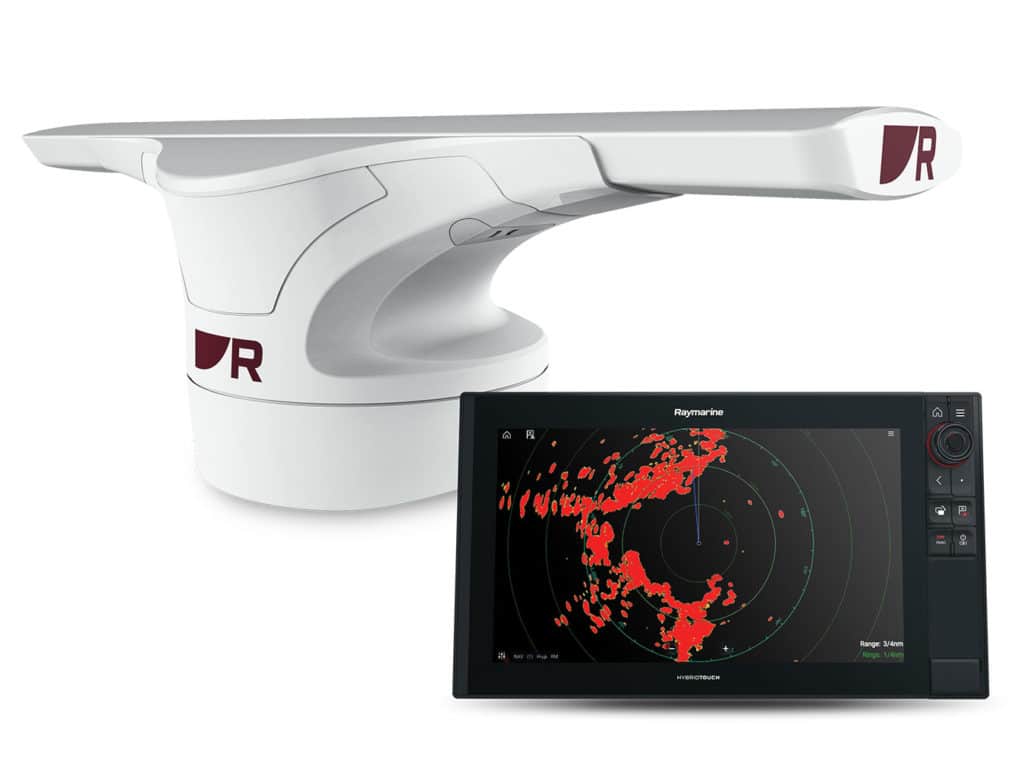
Designed to fit onto a wider range of vessels, the new scanners—available in 3-, 4- and 6-foot arrays—are only 13.2 inches tall and weigh 51 pounds. Profiles are so low, these scanners spin beneath the arrays of many conventional radars. To enhance the sleek appearance, Raymarine also created a waterproof cable gland within the scanner’s pedestal to conceal electrical connections by running them down into the mounting surface.
Not to be outdone in style, Garmin introduced two color options for its new GMR Fantom 18x and 24x solid-state marine radars. The exteriors are now available in either black or white to complement the color scheme of your boat.
Read Next: Small Dome Radars Grow in Capabilities
Doppler Developments
Doppler technology continues to proliferate as more new solid-state radars become available. You now find Doppler features—in one form or another—in radars from every major electronics brand. Furuno provides one example: the compact DRS2DNXT 19-inch radome, which comes with the same features and modes as the larger 24-inch NXT dome, including Furuno’s NXT solid-state Doppler technology, known as Target Analyzer.
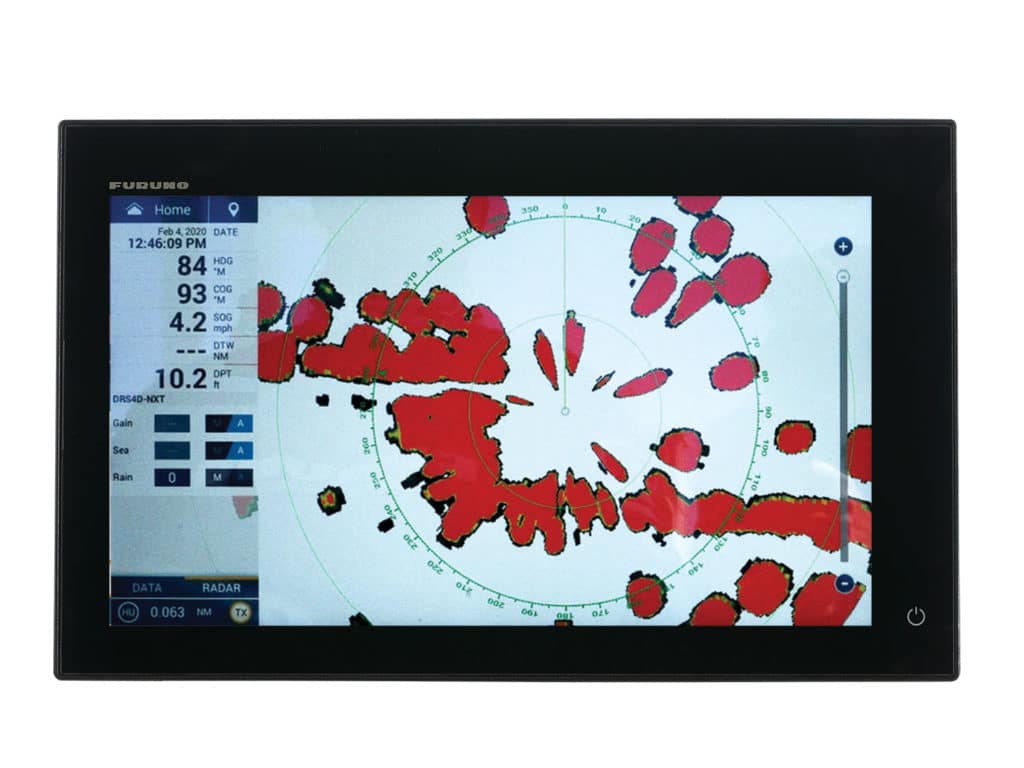
With Target Analyzer, stationary or slow-moving echo returns, such as land masses or boats approaching your vessel at a velocity of less than 3 knots, appear green. Target returns shift to red when an object approaches your vessel at a speed of 3 knots or faster, independent of your own speed, thereby alerting the captain to possible collision situations.
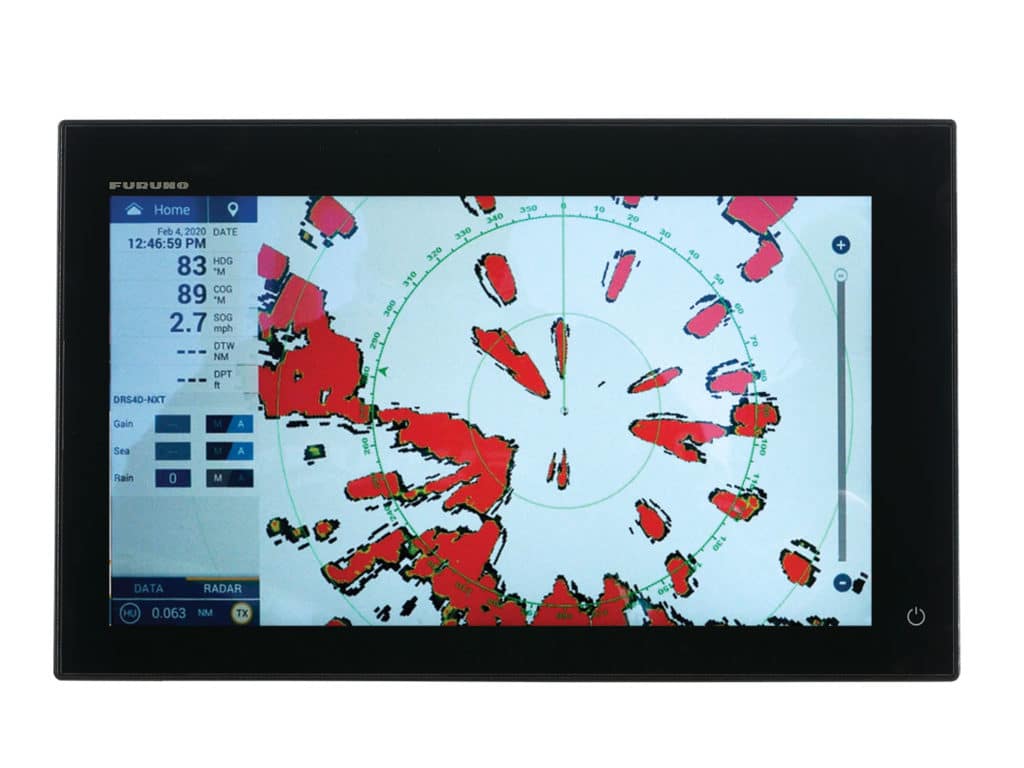
Garmin’s Fantom 18x and 24x solid-state dome radar series represents another example of Doppler application, which the company calls MotionScope. This feature highlights targets moving toward you in one color, such as red, so you can navigate around them. It also paints targets moving away in another color, such as green.
The Doppler mode in the Raymarine Cyclone series displays in a three-color palette, one color each to indicate targets traveling toward you, away from you and stationary.
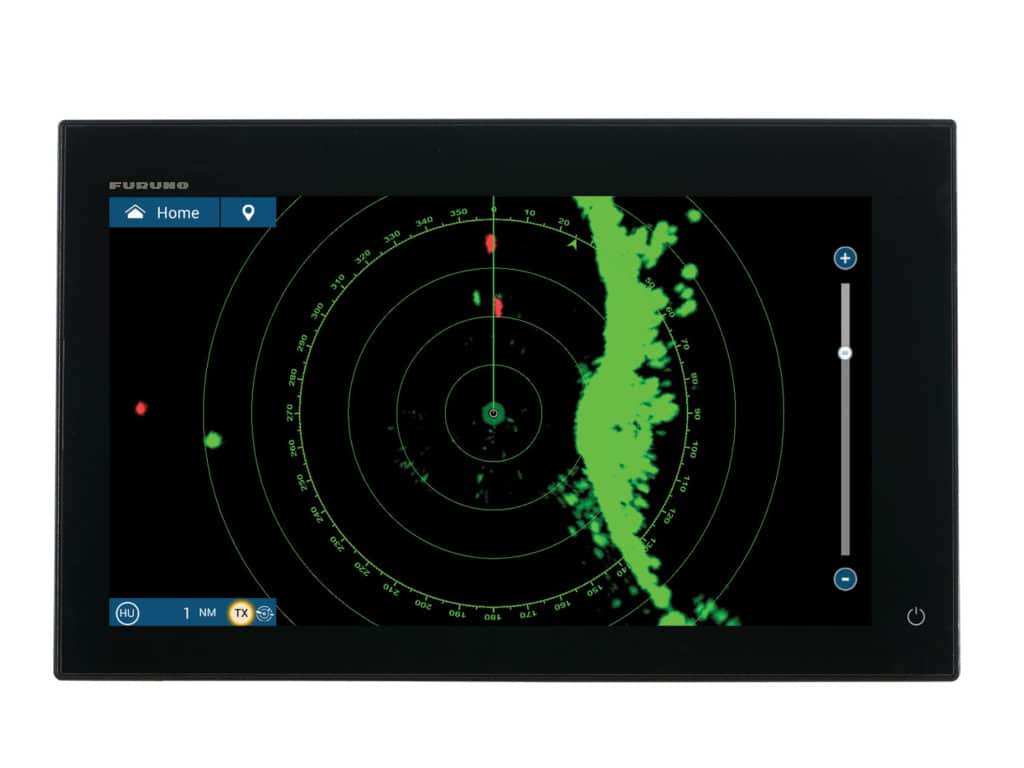
High Resolution
Newer solid-state marine radars offer improved target resolution. For instance, Raymarine’s Cyclone series combines advanced dielectric radar technology with post-processing to remove sea and rain clutter, and replicate chartlike images on the radar screen.
Furuno’s DRS2DNXT incorporates RezBoost to better define onscreen targets. This capability is critical with a smaller dome that emits a wider beam width than an open-array radar. As a result, dome radars tend to display distant targets as elongated echoes. But Furuno’s RezBoost feature sharpens the target returns, achieving the equivalent resolution of a larger antenna array.
Today’s new radars can also pick up echo returns at an amazingly broad spectrum of distances. Garmin’s Fantom 18x and 24x dome systems detect targets from 20 feet to 48 nautical miles out, and do so in fog and rain.
Bird Mode
Perhaps no other radar feature is more appreciated by anglers than bird mode, and for this reason more and more radars, even dome systems, incorporate it, including Furuno’s DRS2DNXT. The bird mode in this system automatically adjusts gain and clutter to better detect flocks or even individual birds feeding on baitfish beyond visual range.
The Raymarine Cyclone also offers an enhanced bird mode for locating flocks of feeding seabirds and the fish under them. A press of the bird-mode function key optimizes gain to see birds at a distance, usually in blue or green.
Read Next: Find Birds with Radar
Dual-Ranger
Simultaneous dual-range capabilities are increasingly common in marine radar systems. The Garmin 18x and 24x domes both offer this feature, giving you the ability to see targets both near and far at the same time. You can also overlay one or both radar ranges on a chart plotter, eliminating the need to toggle between chart and radar views.
The RangeFusion technology in the Raymarine Cyclone goes a step further. As with Garmin’s dual-range feature, you can view short and long ranges (up to 96 miles) on a split screen. Or you can merge short- and long-range pulses into a single high-clarity radar screen that requires only one pane to view yet optimizes the radar returns for ranges.
Spin Cycle
An increasing number of radars offer user-selectable high-speed rotation. Both the new Garmin dome radars and Raymarine Cyclone series let you advance the rotation speed of the scanner up to 60 rpm.
Why is this important? The higher the rotation speed, the faster the refresh rate on the display, and that helps detect moving targets more quickly, such as boats approaching at high speeds. This gives you more time to avoid the threat.
Today’s radar systems offer greater safety and bird-finding capabilities than ever before. And with radar becoming more compact, there is no reason to head seaward without it.
Read Next: Mounting Boat Electronics With Limited Space
New Marine Radar Electronics
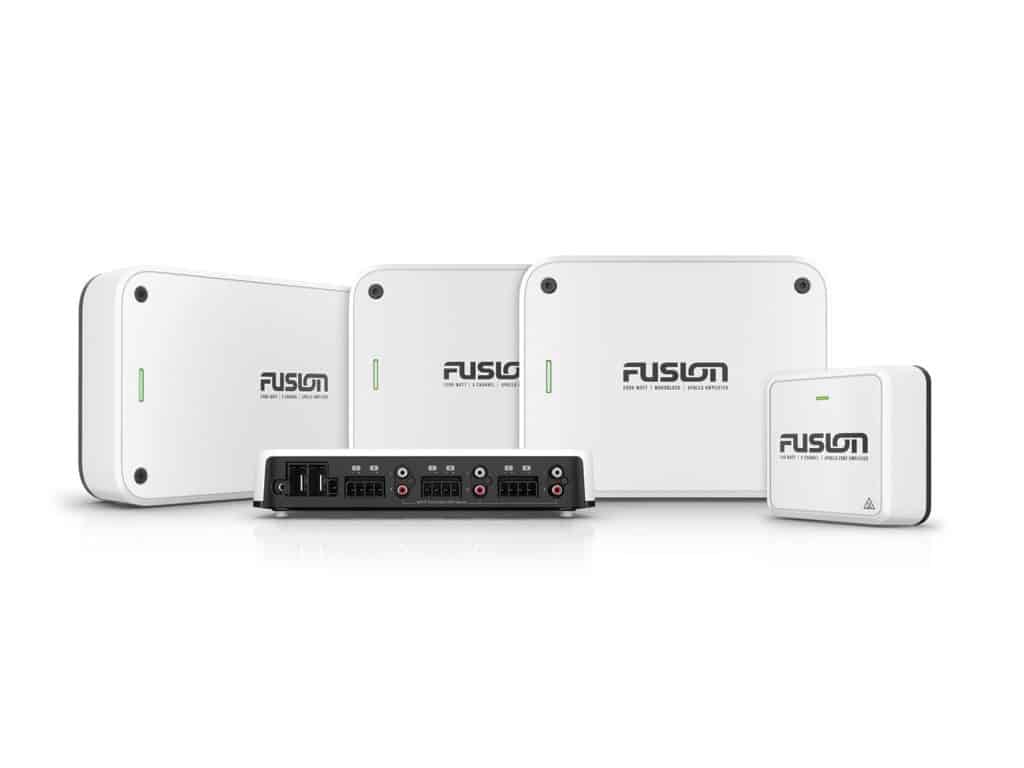
SWS0322-Elex-6
Apollo Series amplifiers from Fusion Entertainment use digital signal processing to enhance audio clarity. They are available in one-, two-, four-, six- and eight-channel models. With 150 watts of RMS power per channel, the compact amps are easy to install and set up with a wireless Fusion-Link connection. With the Fusion-Link app, you can tune the amplifiers from a mobile device. $179.99 to $949.99; fusionentertainment.com
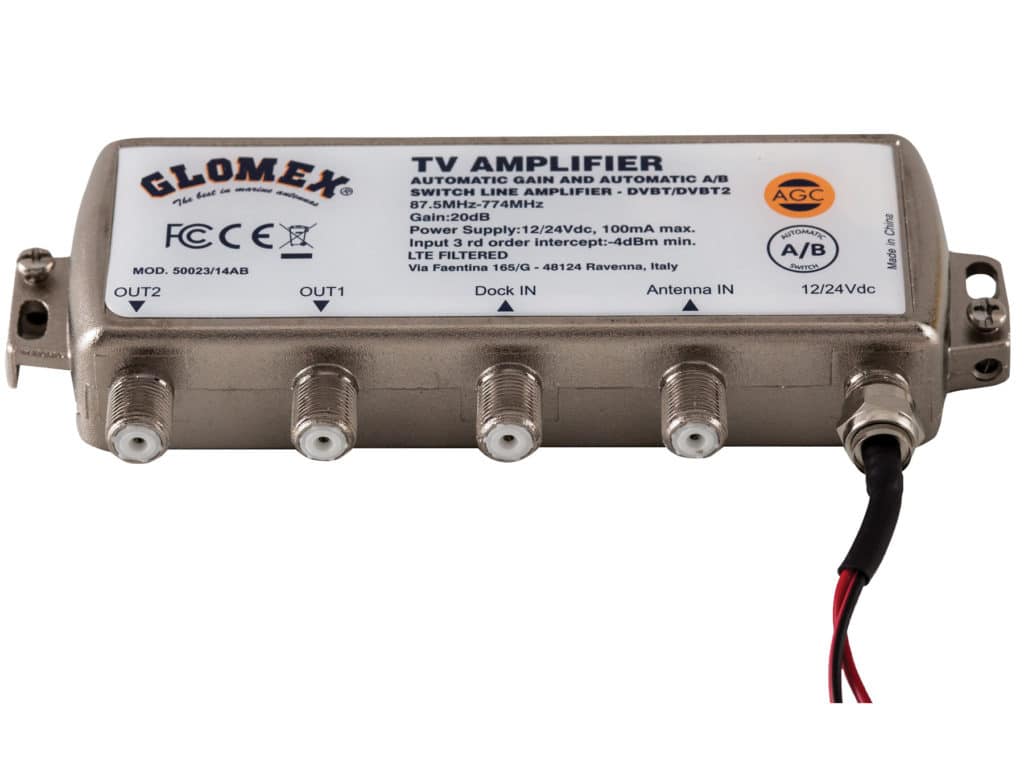
The Glomex Automatic Gain Control DVB-T2 TV amplifier automatically selects the best signal and adjusts gain to provide optimal onboard TV viewing, whether connected to a dockside cable or using over-the-air reception. It runs on 12/24V DC with a maximum draw of 100 mA, and features dock and vessel antenna inputs, and TV/TV and TV/FM radio output coax ports. It comes standard with Glomex TV antennas. $99; glomex.us
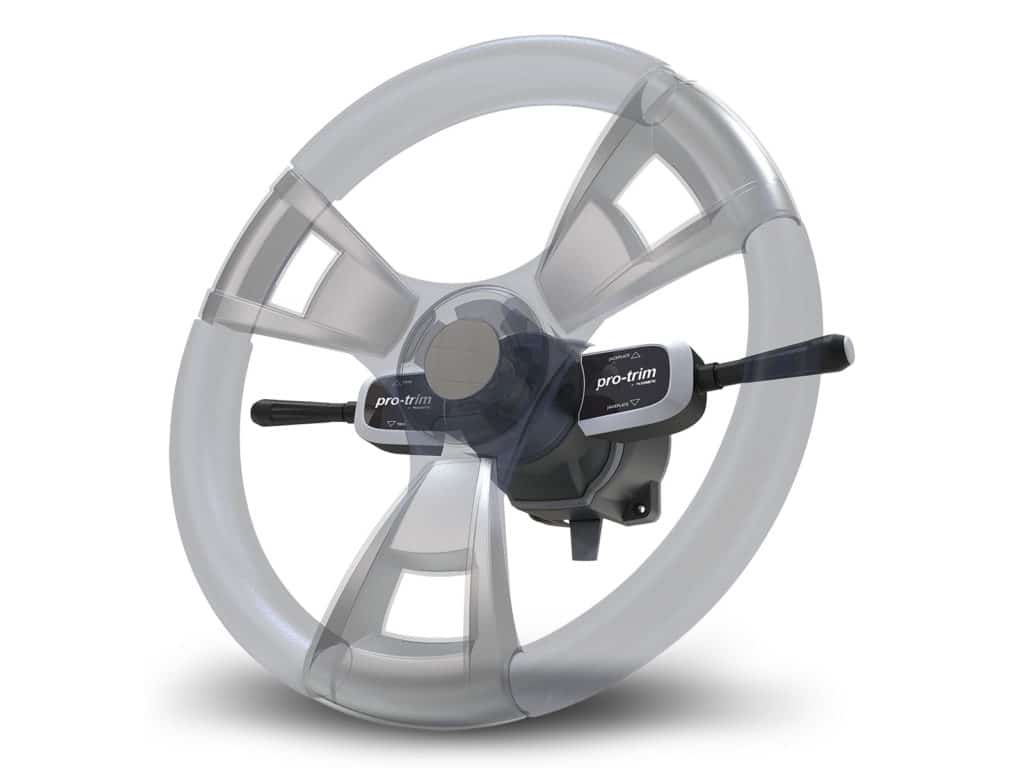
Dometic Marine updated its Pro-Trim turn-signal-style electric trim control with a sleeker design. Popular on bay boats and flats skiffs, Pro-Trim offers fingertip control of trim and jack-plate adjustments while keeping both hands on the wheel. It fits SeaStar hydraulic and cable steering helms, and is available in single- and dual-function.
$62.66 for PT1000 single control, $120 for PT2000 dual control; marinepartssource.com
FAQ
What is the difference between marine radar and GPS?
Marine radar is an active sensor that transmits radio waves to detect objects and targets around the vessel, providing real-time visual feedback on a radar display screen. GPS (Global Positioning System), on the other hand, is a navigation system that utilizes satellites to determine the precise location, course, and speed of the vessel.
How far does marine radar reach?
The range of marine radar varies depending on factors such as the radar’s power output, antenna size, and height above the waterline, but generally, it can detect targets from a few hundred meters up to 48 nautical miles (89 kilometers) or more for larger, more powerful radar systems.
Is boat radar worth it?
Boat radar can be a valuable investment, especially for larger vessels or those navigating in areas with high vessel traffic, limited visibility, or challenging weather conditions. It provides enhanced situational awareness, helps identify potential hazards, and assists in safe navigation, making it worth the cost for many boaters who prioritize safety and collision avoidance.









